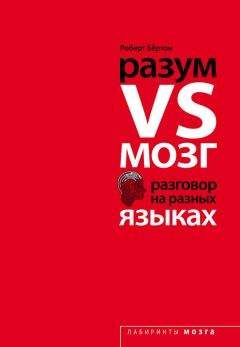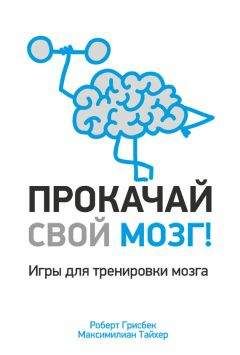of failure to access graphemic representations. Cognitive Neuropsychology 15:203–238.
Mishkin, M., & Pribram, K. H. (1954). Visual discrimination performance following partial ablations of the temporal lobe. I. Ventral vs. lateral. Journal of Comparative and Physiological Psychology 47(1):14–20.
Mithen, S. (1996). The prehistory of the mind: The cognitive origins of art, religion and science. London: Thames & Hudson.
Miyashita, Y. (1988). Neuronal correlate of visual associative long-term memory in the primate temporal cortex. Nature 335(6193):817–820.
Molko, N., Cohen, L., Mangin, J. F., Chochon, F., Lehéricy, S., Le Bihan, D., & Dehaene, S. (2002). Visualizing the neural bases of a disconnection syndrome with diffusion tensor imaging. Journal of Cognitive Neuroscience 14:629–636.
Mondloch, C. J., & Maurer, D. (2004). Do small white balls squeak? Pitch-object correspondences in young children. Cognitive, Affective, and Behavioral Neuroscience 4(2):133–136.
Montant, M., & Behrmann, M. (2000). Pure alexia. Neurocase 6 265–294.
Morais, J., Bertelson, P., Cary, L., & Alegria, J. (1986). Literacy training and speech segmentation. Cognition 24:45–64.
Morais, J., Cary, L., Alegria, J., & Bertelson, P. (1979). Does awareness of speech as a sequence of phones arise spontaneously? Cognition 7:323–331.
Morrison, R. E., & Rayner, K. (1981). Saccade size in reading depends upon character spaces and not visual angle. Perception and Psychophysics 30(4):395–396.
Mozer, M. C. (1987). Early parallel processing in reading: A connectionist approach. // Coltheart, M. (Ed.), Attention and performance XII: The psychology of reading (c. 83–104). Hillsdale, NJ: Erlbaum.
Naatanen, R., Lehtokoski, A., Lennes, M., Cheour, M., Huotilainen, M., Iivonen, A., Vainio, M., Alk, P., Ilmoniemi, R. J., Luuk, A., Allik, J., Sinkkonen, J., & Alho, K. (1997). Language-specific phoneme representations revealed by electric and magnetic brain responses. Nature 385(6615):432–434.
Naccache, L., & Dehaene, S. (2001). The priming method: Imaging unconscious repetition priming reveals an abstract representation of number in the parietal lobes. Cerebral Cortex 11(10):966–974.
Naccache, L., Gaillard, R., Adam, C., Hasboun, D., Clémenceau, S., Baulac, M., S., D., & L., C. (2005). A direct intracranial record of emotions evoked by subliminal words. Proceedings of the National Academy of Sciences 102:7713–7717.
Nakamura, K., Dehaene, S., Jobert, A., Le Bihan, D., & Kouider, S. (2005). Subliminal convergence of Kanji and Kana words: Further evidence for functional parcellation of the posterior temporal cortex in visual word perception. Journal of Cognitive Neuroscience 17(6):954–968.
Nakamura, K., Honda, M., Okada, T., Hanakawa, T., Toma, K., Fukuyama, H., Konishi, J., & Shibasaki, H. (2000). Participation of the left posterior inferior temporal cortex in writing and mental recall of Kanji orthography: A functional MRI study. Brain 123(Pt 5):954–967.
Nation, K., Allen, R., & Hulme, C. (2001). The limitations of orthographic analogy in early reading development: Performance on the clue-word task depends on phonological priming and elementary decoding skill, not the use of orthographic analogy. Journal of Experimental Child Psychology 80(1):75–94.
National Institute of Child Health and Human Development. (2000). Report of the National Reading Panel. Teaching children to read: An evidence-based assessment of the scientific research literature on reading and its implications for reading instruction (NIH Publication No. 00–4769). Washington, D.C.: U.S. Government Printing Office.
Nazir, T. A., Ben-Boutayab, N., Decoppet, N., Deutsch, A., & Frost, R. (2004). Reading habits, perceptual learning, and recognition of printed words. Brain and Language 88(3):294–311.
Nicolson, R. I., Fawcett, A. J., & Dean, P. (2001). Developmental dyslexia: The cerebellar deficit hypothesis. Trends in Neurosciences 24(9):508–511.
Nieder, A., Diester, I., & Tudusciuc, O. (2006). Temporal and spatial enumeration processes in the primate parietal cortex. Science 313(5792):1431–1435.
Nieder, A., & Miller, E. K. (2004). A parieto-frontal network for visual numerical information in the monkey. Proceedings of the National Academy of Sciences 101(19):7457–7462.
Nimchinsky, E. A., Gilissen, E., Allman, J. M., Perl, D. P., Erwin, J. M., & Hof, P. R. (1999). A neuronal morphologic type unique to humans and great apes. Proceedings of the National Academy of Sciences 96(9):5268–5273.
Niogi, S. N., & McCandliss, B. D. (2006). Left lateralized white matter microstructure accounts for individual differences in reading ability and disability. Neuropsychologia 44(11):2178–2188.
Nobre, A. C., Allison, T., & McCarthy, G. (1994). Word recognition in the human inferior temporal lobe. Nature 372(6503):260–263.
Nunez, R. E., & Lakoff, G. (2000). Where mathematics comes from: How the embodied mind brings mathematics into being. New York: Basic Books.
Olavarria, J. F., & Hiroi, R. (2003). Retinal influences specify cortico-cortical maps by postnatal day six in rats and mice. Journal of Comparative Neurology 459(2):156–172.
O’Regan, J. K. (1990). Eye movements and reading. Reviews of Oculomotor Research 4:395–453.
Orton, S. T. (1925). “Word-blindness” in school children. Archives of Neurology and Psychiatry 14:581–615.
Orton, S. T. (1937). Reading, writing, and speech problems in children. New York: Norton.
Paap, K. R., Newsome, S. L., & Noel, R. W. (1984). Word shape’s in poor shape for the race to the lexicon. Journal of Experimental Psychology: Human Perception and Performance 10(3):413–428.
Pacton, S., Perruchet, P., Fayol, M., & Cleeremans, A. (2001). Implicit learning out of the lab: The case of orthographic regularities. Journal of Experimental Psychology: General 130(3):401–426.
Pammer, K., Hansen, P. C., Kringelbach, M. L., Holliday, I., Barnes, G., Hillebrand, A., Singh, K. D., & Cornelissen, P. L. (2004). Visual word recognition: The first half second. Neuroimage 22(4):1819–1825.
Paracchini, S., Thomas, A., Castro, S., Lai, C., Paramasivam, M., Wang, Y., Keating, B. J., Taylor, J. M., Hacking, D. F., Scerri, T., Francks, C., Richardson, A. J., Wade-Martins, R., Stein, J. F., Knight, J. C., Copp, A. J., Loturco, J., & Monaco, A. P. (2006). The chromosome 6p22 haplotype associated with dyslexia reduces the expression of KIAA0319, a novel gene involved in neuronal migration. Human Molecular Genetics 15(10):1659–1666.
Parviainen, T., Helenius, P., Poskiparta, E., Niemi, P., & Salmelin, R. (2006). Cortical sequence





